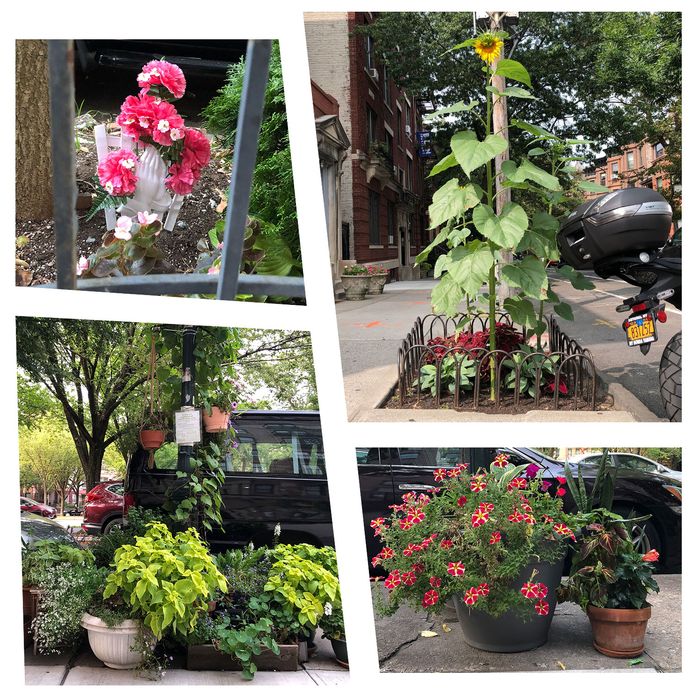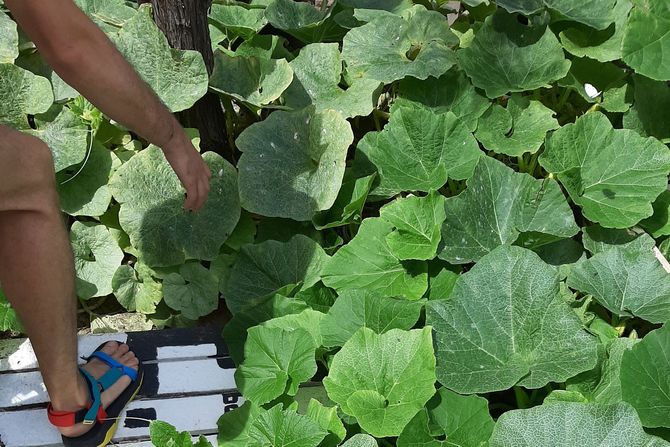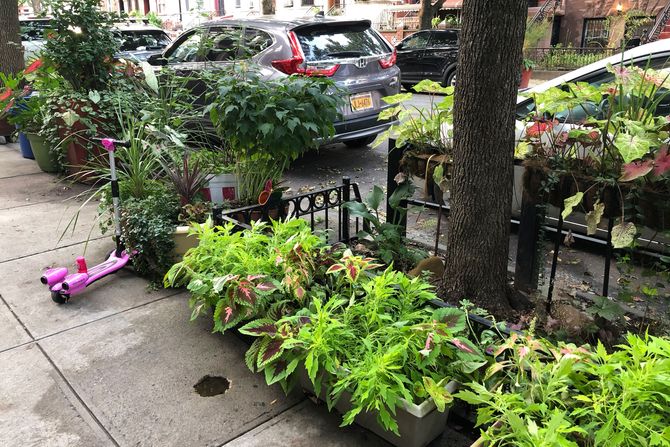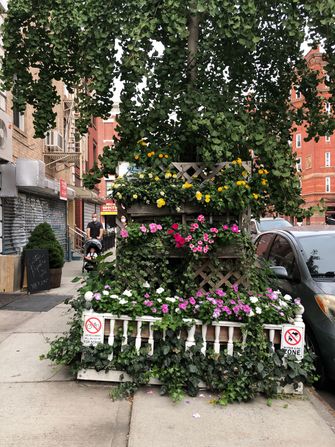
The pandemic has slowed some of us down, allowing for the appreciation of parts of our neighborhoods that might’ve gone overlooked. Things like the humble “tree pit,” which is what the city Parks Department calls those scrappy patches of dirt surrounding street trees that it is in charge of maintaining. There are at least 700,000 of these microparks (700,000 being the number of street trees catalogued with the Parks Department; there isn’t a count on the pits themselves) in various states of cultivation. When untended, they can become weedy and overrun or left to become a dog’s bathroom. But green-thumbed, space-starved New Yorkers who manage to keep the pups and the wild delirium-inducing weeds at bay are able to carve out beautiful micro-Edens in these often neglected plots.
During walks around the city — in COVID times and before — I’ve enjoyed seeing how people make tree pits their own, with a few flowers here and there or squeezing plants into every square inch. Some blocks take it to the next level and turn their streets into veritable Edens, as the Greenest Block in Brooklyn competition attests. There are puzzling neighborhood oddities, like: How did decorative kale become ubiquitous on the Upper East Side? (Redditors have wondered the same.) But even with all of the diversity and personality found in these little gardens, if you’re paying close attention to them, a few patterns emerge. There are the more formal tree pits, with trimmed hedges and roses; the unruly pollinator patches; the architectural gardens; and then the wild cards, which hold everything from plastic flowers to protest signs (in the absence of a lawn, a tree pit will do).
Although both trees and the pits are owned by the city, the actual ground is open for anyone to garden in, so long as you don’t plant anything in the pit that would harm the tree itself. “Perennials, annuals, and bulbs are beautiful additions to a tree pit, as long as you remember that the tree’s health comes first,” the Parks Department writes on its website. The city warns against bamboo, ivy, vines, woody shrubs, or evergreens, which compete with the tree for water and nutrients.
There’s still a world of possibility even within these limitations. On an afternoon walk around Flatbush, I saw a tree-pit hedge trimmed into the shape of a heart; one with a small sign tucked between purple blooms that said, “Care for this”; a pit with a rosebush that was taller than the car parked next to it; one with a kid’s toy tractor among the mulch and tiny yellow flowers; and another one overflowing with daisies and sunflowers. Each plant is a generous contribution by people who want to make the city nicer, and more beautiful, to be in.
As I was admiring a tree pit near Grand Army Plaza planted with hot-pink vinca, the building’s super told me I could find the flowers at Lowe’s. Caladium, broad green leaves shot through with red veins, and coleus, with their maroon-and-green leaves, are other popular tree-pit plants that are also available at big-box garden centers.
The places that get a little more experimental — and offer the best tree-pit peeping — are those Greenest Block in Brooklyn contenders. Last year, 160 blocks entered the competition. When I walked over to Lincoln Place between Nostrand and New York Avenues, the winner in 2019, a few of the women who organize their block happened to be sitting in some folding chairs on the sidewalk. They mentioned that they had been doing this for 30 years, and the well-established gardens in their pits, window boxes, and on their stoops were pretty telling about their long-standing dedication. This year, the contest was canceled because of COVID-19, but the women were already getting ready for next year by propagating new plants and imagining what they could do to green the block even more.
And it’s not just the destination blocks that have well-tended gardens. If you look hard enough, you might find vegetables or herbs, or even a small fruit tree.
This summer, a little patch of soil in front of a Rastafarian restaurant in Crown Heights has been overflowing with eggplants, tomatoes, and peppers. A few blocks away, in front of an apartment building on Bedford Avenue, there’s a garden planted with tomatoes and flowers. On Eastern Parkway, a group named Crown Heights Keepers has built planter boxes on the sidewalk and is growing herbs and veggies for their neighbors as a form of COVID relief. Small corn patches have been spotted on the Upper West Side and in Cobble Hill. More tomatoes have been spotted in Bed-Stuy. Squash vines are crawling in East Harlem. One of my co-workers mentioned seeing the occasional vegetable patch in Kensington and wagered that the immigrant mix — the neighborhood is among Brooklyn’s most diverse with a large proportion from South Asia — leads to more utilitarian gardening. Meanwhile, a bar in Crown Heights has also planted rosemary, mint, and basil in its streetery planters, and there are surely more curbside edible microgardens across the city.
While New York has a long history of passionate urban farmers and community gardeners who cultivate their vegetables in officially sanctioned places, these tree-pit gardens are more ad hoc and feel emblematic of the recent quarantine gardening boom. If you want to grow a garden but can’t do it in your apartment and don’t have a backyard, those patches of dirt in the sidewalk seem mighty appealing — if you can manage to loosen the packed soil, work in some fertilizer, and water regularly.
Even when they’re not actively tended to, tree pits can still hold some sweet surprises. On my block, one that becomes overgrown with grasses and weeds in the summer has become a hideout for the street cats. Neglected pits are sometimes taken over by wildflowers like fall-blooming asters. Even the tree guards have some variation. The city has 11 recommended styles, but again, folks wind up designing their own. Some have become almost architectural, doubling as benches — a nice place for a little break before continuing on a walk to discover the next great tree pit in your neighborhood.






























